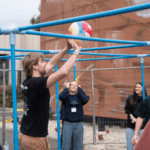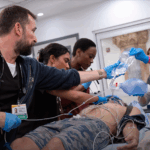University of New South Wales researchers are working to better incorporate Indigenous practices and understandings of fire in bushfire management, to better prepare for an increasingly uncertain future.
UNSW Bushfire Director Professor Jason Sharples is a Bundjalung man. Prof. Sharples said Indigenous fire knowledge added depth to modern bushfire research.
“Fire management was an intrinsic part of living on Country for Indigenous people and involved the whole community,” he said.
“Many of our fire practices today, such as prescribed burns, are informed by Indigenous knowledge, even if people may not realise it. Local Indigenous people would know the land was ready for a burn when certain environmental indicators aligned – for example, when wattle flowers fell and when certain cloud formations were observed over prominent mountains. Essentially, Country told them the right time to burn, and the people would offer fire as a gift back to Country.”
“From a Western scientific perspective, this aligns with selecting the correct season based on the native flora and only burning on a day when temperature and relative humidity conditions are within an acceptable range, as indicated by the cloud formations.”
UNSW Canberra is leading two significant projects, supported by the NSW Bushfire and Natural Hazards Research Centre, in which incorporating Indigenous knowledge and collaborating with Indigenous partners is a key requirement.
One of the projects will look at ridgelines and how to best manage the landscape around them to prevent bushfires from developing into dangerous conflagrations.
“Ridgelines are significant within the landscape both ecologically and because they correspond closely with Indigenous Songlines,” Prof. Sharples said.
“Ridgelines are particularly susceptible to dry lightning strikes and so they often serve as the ignition point of bushfires. Moreover, the winds that swirl around ridgelines can create extreme bushfires and also send embers flying great distances.”
The second project is examining the bushfire regimes of south-east Australia and attempting to better understand how they will be affected by climate change. With updated models and mapping, it’s hoped the research will identify the areas most at risk of extreme bushfire events, like fire thunderstorms.
To do this, the researchers will examine traditional fire regimes, Indigenous calendars and cultural fire lore from across Country to gain a deeper understanding of how modern fire regimes have changed over time.
To Indigenous Australians fire was a tool for hunting and harvesting food, it was a key part of cultural rites, and to understand and use fire was intrinsic to living on Country.
Visit the UNSW Bushfire website for more information about the research being conducted at UNSW.













